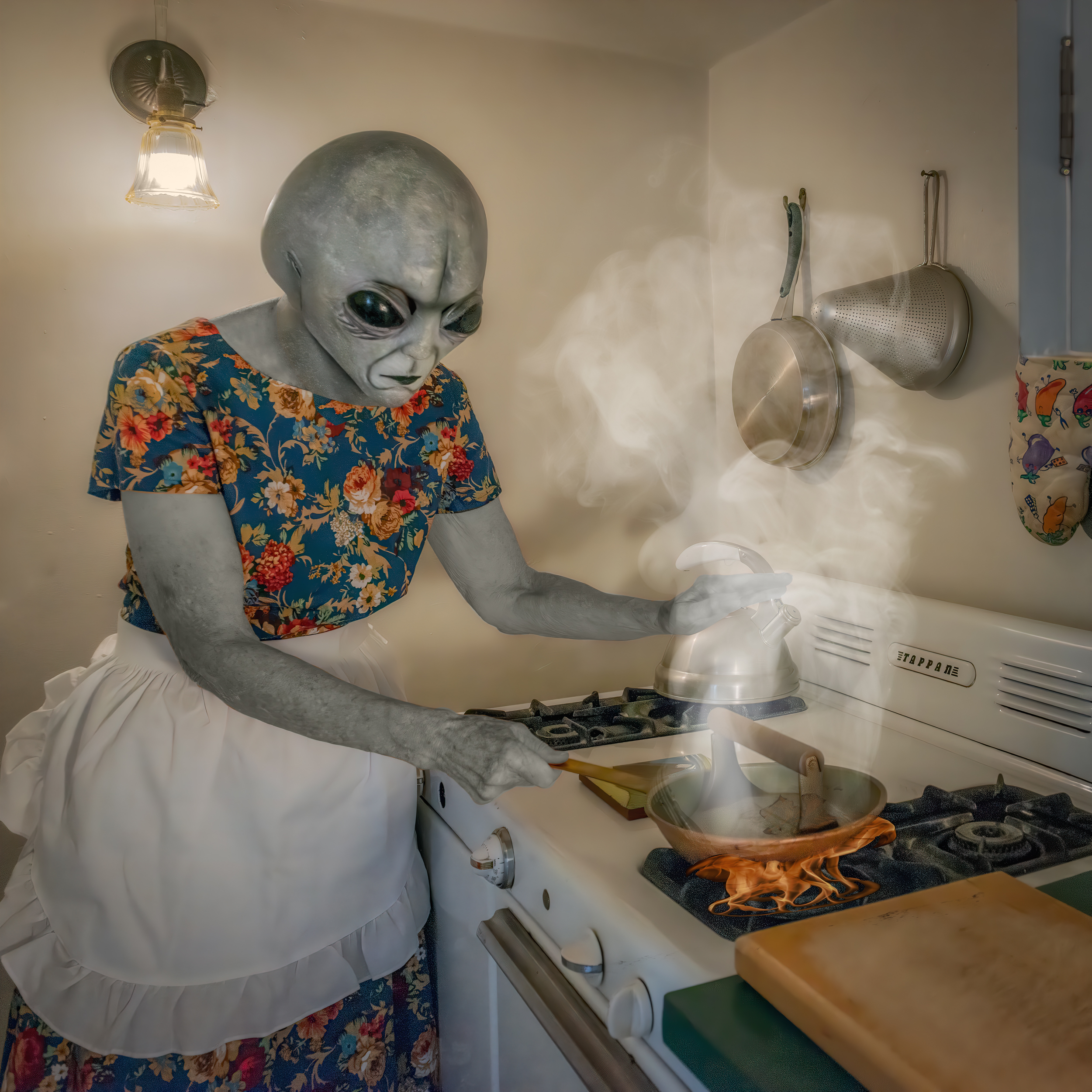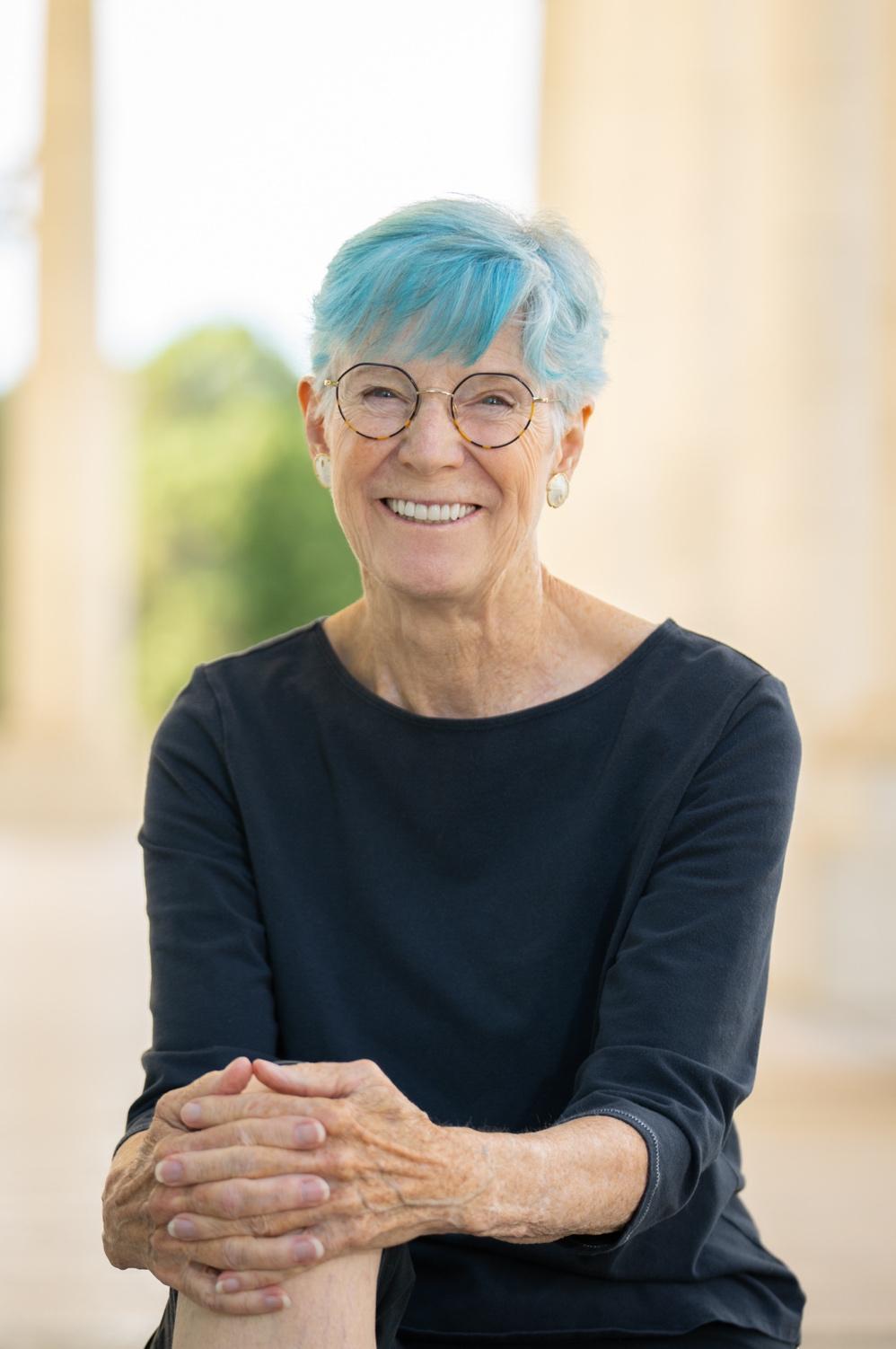Although Dale Ralph had been taking photographs for many years while she worked as a CPA, it was only after she left corporate America that she began pursuing her hobby full-time. In 2014, she was introduced to the many possibilities of composite photography and took her photography in a totally new direction.

Dale loves creating worlds and images that are totally her own. She finds that the flexibility of composites gives her the tools she needs to express her vision more fully. Dale’s photographs have appeared in juried gallery exhibits and magazines.
I spoke with Dale to find out more about her work and the world of composite photography.

What got you into photography?
D: I have been taking photos since I was a girl in summer camp. I had an old broken Kodak camera that I used to play with before it was fixed. For many years I took snapshots of friends and family and places I visited. Years later I became more serious about trying to upgrade my snapshots to photographs. My interest and dedication took a giant leap when I realized that with the help of Photoshop and other applications, I could create characters and worlds of my own making and not be limited by ‘reality’.
Do you have a favourite genre of photography and why?
I enjoy variety and many types of photography. However, my favourite genre remains composite photography where I can bring my imagination to life. Unlike many photographers, my favourite part of photography is the editing. I love creating in Photoshop. I also enjoy infrared photography and the surreal looks I can achieve.

You do a lot of digital composite work – what drew you to this type of work? And how do you go about creating it?
I was first drawn to composites when I viewed the beautiful and imaginative work of Brooke Shaden, who uses both self-portraits and composite techniques in her photographs.
It all begins with an idea. Once I have that idea firmly in my head, I spend time thinking about how it will be represented in the final photograph. I then decide on the location and costume. I then stage and shoot it using a tripod, remote shutter release (on delay) and flash when needed. Although I have been fortunate enough to occasionally have access to some wonderful models, most of my photographs are self-portraits. The great thing about using myself as the model is that I’m available when needed, although I frequently need a mask to fit the idea.
What kind of influences do you draw inspiration from?
Inspiration comes from all kinds of places including current events, books, humour, discussions with friends, old master paintings, etc. Sometimes an idea simply jumps into my mind and won’t leave until I bring it to life. I find those ideas that won’t leave result in some of my best and/or most influential photographs. For example, I was and am very disturbed about the reports of Catholic priests abusing children. My horror with the ongoing news reports resulted in my piece, ‘The Price of Silence’, which received positive attention when it appeared in a Denver gallery. It was also amazing how everything that was needed to produce this photograph simply and easily fell into place as if it had a life of its own and was meant to be.
Similarly, my humorous piece ‘Alien Cereal Killer’ came into my head on a drive back from the Telluride Film Festival where I spent most of the drive imagining how it would look and how I would do it.
The first piece I created to represent a deeper idea was ‘Looking for the Light’, which shows a blindfolded woman carrying a lantern. This photograph depicts how many of us look for solutions/inspiration/miracles outside ourselves without realizing that we are already carrying what we need within ourselves.

Do you have any favourite photographers or creative influences that have informed your photographic style, and why?
I love the work of Brooke Shaden as it was her photographs that initially made me realize that I could use composite techniques to represent ideas in ways that were not possible without them.
Lately, I’m also drawn to the leaders of the early 20th Century Photo-Secession movement such as Alfred Stieglitz, Paul Strand and others. I’m amazed at the beauty and depth of those early photographs and plan on working on a series of photographs to emulate their style.

What kit do you shoot with and what’s your favourite bit of kit?
Since I went digital, I’ve been using Nikon kit. I started with a D300, which was later upgraded to a D700 before going mirrorless. My current cameras are a Nikon Z7II, and a Z9 as well as a ZFC and a Z50, which were both converted to infrared.
What are you working on at the moment?
I am continuing my ‘Aliens Are People Too’ series along with ongoing exploration of infrared photography. In addition, I am experimenting with techniques to emulate the black and white photographs produced by the early 20th Century photographers. I enjoy learning new things and believe it is essential to my growth in photography.

What would you say is your goal with your photography?
I love it when my photographs get someone to smile or to think.
As a female photographer, do you feel that you face any particular challenges? Do you feel that the industry is favourable towards women, or would you like to see any changes?
Maybe it’s because I’m retired from my career in auditing and consulting, or the fact that I have a name where folks assume I am male; but I haven’t noticed any prejudice due to my being female.

What advice would you give to budding photographers?
If you can see it in your mind’s eye, you can produce it.
You can view more of Dale’s work at her website.

